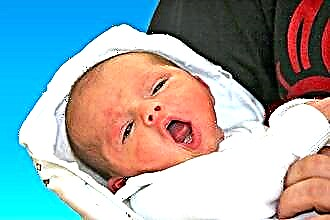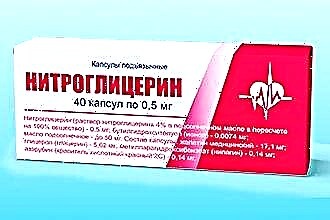After birth, the baby is exposed to aggressive environmental factors, which is stressful for a small organism. Thanks to adaptive reactions, the newborn quickly adapts, which cannot be said about young parents. For them, the thoracic period is the most terrible. This is the first time they experience baby colic, teething, runny nose and digestive dysfunction. 3-6 weeks after birth, parents may notice that the newborn's nose grunts, but no snot. What is the reason?
To find out how dangerous the appearance of nasal congestion is, you need to pay attention to:
 the presence of cough, mucous membranes, purulent nasal discharge;
the presence of cough, mucous membranes, purulent nasal discharge;- temperature increase;
- lack of appetite, which is manifested by the refusal of the breast;
- the nature of the chair;
- the presence of skin rashes;
- dream;
- general condition (lethargy, moodiness).
If a newborn child grunts his nose, but there are no other symptoms of the disease, it is necessary to consult a pediatrician for preventive purposes. He will explain the cause of your nasal congestion and tell you how to properly clean your nasal cavities.
It is forbidden to use folk methods for newborns, since parents cannot independently assess the severity of the child's condition, which is fraught with serious complications.
Non-dangerous reasons
There are physiological reasons for the occurrence of sniffling in infants. These conditions are absolutely safe if you properly care for the nasal passages. Cleansing your nose regularly will make it easier for your baby to breathe, and he will be much calmer.
Physiological rhinitis
After returning home from the hospital, parents may notice that the baby began to grunt, and there was a small mucous discharge from the nose. You should not panic, because this indicates the ongoing cleansing of the respiratory tract from mucus.
The fact is that when in the womb, the embryo is surrounded by amniotic fluid, which in small quantities enters the nasopharynx. Immediately after birth, fluid is gently aspirated from the baby's nose, however, it is quite difficult to remove it in full without injuring the mucous membrane.
 Gradually, the remnants of mucus begin to leave on their own, clearing the upper respiratory tract. It is important for parents at this moment to monitor the cleanliness and patency of the nasal passages.
Gradually, the remnants of mucus begin to leave on their own, clearing the upper respiratory tract. It is important for parents at this moment to monitor the cleanliness and patency of the nasal passages.
In the first 2 months, the baby is adapting to new living conditions. If previously the mucous membranes of the nasal passages did not come into contact with air, in the postpartum period they undergo a massive attack of microbes, chemicals and dust.
Physiological rhinitis is a manifestation of the process of habituation of the nasal mucosa to irritating environmental factors.
Treatment of such a rhinitis is not carried out; it is enough to rinse the nasal cavities with saline or saline preparations.
Pathological causes
Unfortunately, the appearance of grunting breathing in a baby is not always due to physiological reasons. Consider what might be causing your nasal congestion.
Accommodations
If the child sniffs, but there is no snot, the first step is to check how the microclimate in the nursery corresponds to the recommended parameters. So:
- air humidity should not be less than 65%. This allows you to moisturize the mucous membrane of the nasal passages and prevent it from drying out;
Note that dry mucosa is more often injured. In addition, it is more sensitive to microbes.
- the temperature in the room should be 19-21 degrees, which will ensure normal heat exchange between the skin and the air, and also prevent irritation of the nasal mucosa;
- Fresh air. It is necessary to ventilate the room daily to ensure oxygen delivery to the internal organs. It will be much easier for the baby to breathe, and the nasal cavities will be cleaned naturally.
Infection
Infectious rhinitis of viral origin is often manifested by severe rhinorrhea, nasal congestion and lack of nasal breathing. It happens that after the end of the acute period, the baby can sniff for a long time.
The reason for this may be the persistence of pathogenic microorganisms in a "semi-active state" due to inappropriate treatment of the common cold. If the intake of drugs was completed earlier than the time recommended by the doctor, the mucous membrane of the nasal passages may remain edematous, making breathing difficult and provoking the appearance of grunting.
In addition, resonant breathing can be observed with complications of microbial rhinitis. If the infection spreads to the larynx, trachea, laryngitis, tracheitis may develop. The child develops a cough, hyperthermia, he becomes moody, sleep and appetite deteriorate.
Allergy
Do not forget about the likelihood of developing an allergic reaction after inhaling pollen, strong odors, using hygiene products, household chemicals, and taking medications. Allergies can occur against the background of the introduction of complementary foods, when a small body meets new products, for example, lemon, strawberries.
Symptomatically, the disease manifests itself:
- lacrimation;
- conjunctival hyperemia;
- itchy eyes, nose;
- skin rashes;
- shortness of breath;
- cough;
- swelling of the lips, eyelids;
- digestive dysfunction.

An allergy can last a month or even more, until the provoking factor stops acting.
Foreign body
Each of us knows that a child is not allowed to give small toys and objects (constructor, beads, buttons). Unconsciously, the baby can introduce a foreign body into the nasal cavity and take a deep breath. As a result, the object can move up the nasopharynx and cause severe sneezing, watery eyes and tantrums in the child.
It is much easier with a one-month-old baby, since he cannot independently take small objects if they lie far from him. When children begin to crawl, the risk of injury to the nasopharyngeal mucosa increases hundreds of times.
When a foreign body enters the larynx, the vocal cords can reflexively close, which is fraught with suffocation.
Children with laryngospasm need immediate help. Signs of deterioration are severe shortness of breath, barking cough, hoarseness and cyanosis (blue skin) of the lips, nose, ears. With the progression of hypoxia, cyanosis spreads to the skin of the face and chest.
Regurgitation of food
Grunting sounds during breathing can be observed with neurological diseases or birth trauma, which requires therapy.
Frequent regurgitation of food can also be observed in the absence of pathology. If the baby was not held correctly while feeding or immediately after eating, they began to actively play with him, the baby may spit up. This is also facilitated by the imperfection of the digestive tract.
Anomalies in the structure of the nose
Septal defects can appear after trauma or be detected immediately after birth, indicating the congenital genesis of the pathology. Violation of air permeability through the nasal passages leads to insufficient ventilation in the surrounding cavities and predisposes the activation of opportunistic flora.
Sluggish inflammation can be manifested by swelling of the mucous membrane. Given the small diameter of the nasal passages, even a slight swelling of the nasal tissues can make breathing difficult and provoke puffing.
How can I help my child?
To facilitate nasal breathing and improve the condition of the newborn, changes in the conditions in the nursery and proper care of the baby are required.
We create a microclimate
You can prevent the appearance of dry crusts in the nasal cavities and swelling of the mucous membrane by adhering to the following recommendations:
- regular airing of the room;
- maintaining humidity (not lower than 65%), temperature at the level of 19-22 degrees;
- regular wet cleaning.
Baby care
To clear the nasal passages, it is enough to have a special aspirator and saline solution. The device has a soft tip that does not injure delicate mucous membranes. If there are dry crusts in the passages, first you need to drip Aqua Maris into the nose, wait a few minutes, and then start cleansing. This will allow the crusts to be removed easily.
Cavities can be washed with saline, Humer, Dolphin. With the frequent appearance of dry crusts in the nose, it is necessary to increase the humidity in the room, as well as to inhale with saline using a nebulizer.
Only with the permission of the pediatrician can vasoconstrictor drops be used for 3-5 days. A baby's health depends a lot on proper care and feeding. Breastfeeding is considered to be the best protection for a baby against infection and other provoking factors. You need to take care of the child's immunity from the first days of life.

 the presence of cough, mucous membranes, purulent nasal discharge;
the presence of cough, mucous membranes, purulent nasal discharge;

